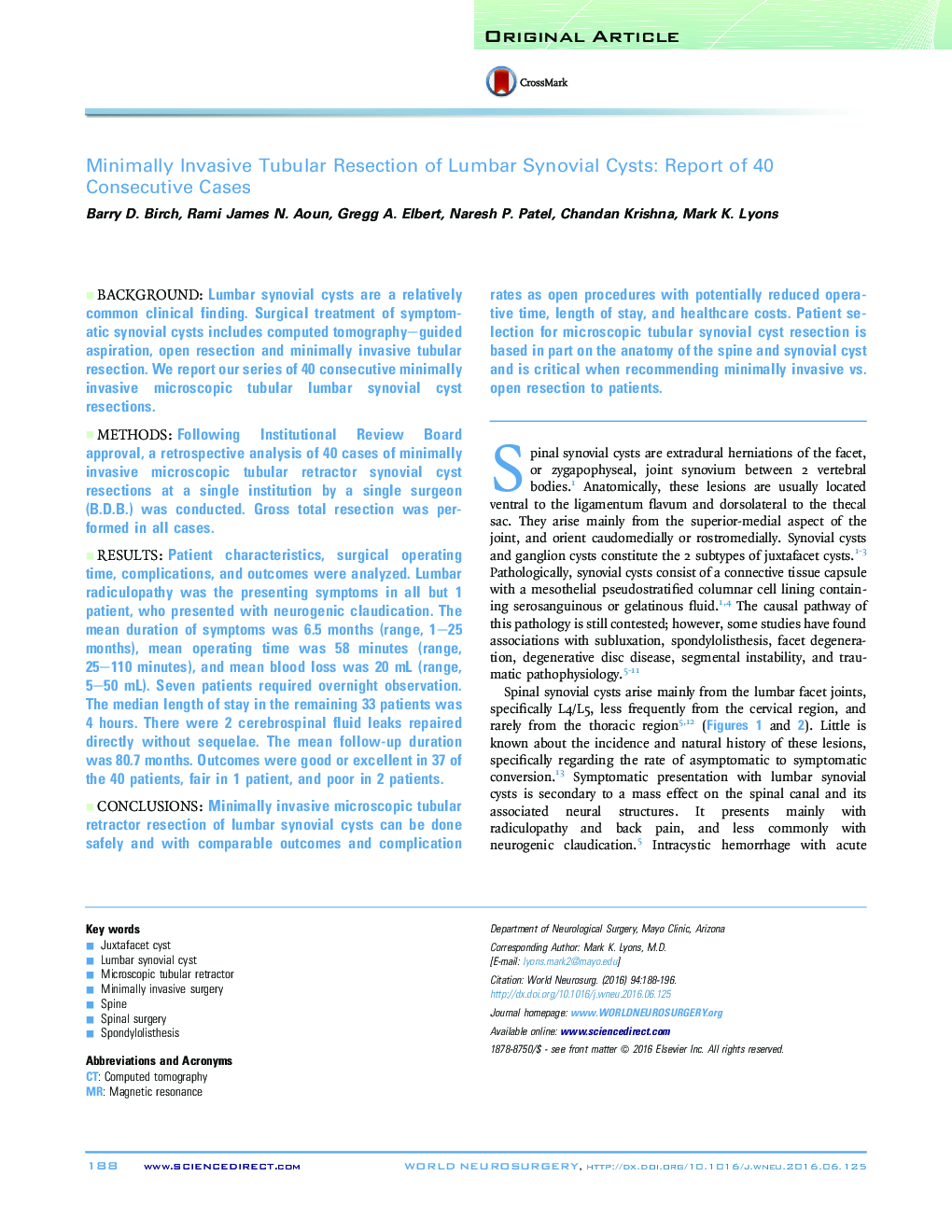| Article ID | Journal | Published Year | Pages | File Type |
|---|---|---|---|---|
| 3094601 | World Neurosurgery | 2016 | 9 Pages |
BackgroundLumbar synovial cysts are a relatively common clinical finding. Surgical treatment of symptomatic synovial cysts includes computed tomography–guided aspiration, open resection and minimally invasive tubular resection. We report our series of 40 consecutive minimally invasive microscopic tubular lumbar synovial cyst resections.MethodsFollowing Institutional Review Board approval, a retrospective analysis of 40 cases of minimally invasive microscopic tubular retractor synovial cyst resections at a single institution by a single surgeon (B.D.B.) was conducted. Gross total resection was performed in all cases.ResultsPatient characteristics, surgical operating time, complications, and outcomes were analyzed. Lumbar radiculopathy was the presenting symptoms in all but 1 patient, who presented with neurogenic claudication. The mean duration of symptoms was 6.5 months (range, 1–25 months), mean operating time was 58 minutes (range, 25–110 minutes), and mean blood loss was 20 mL (range, 5–50 mL). Seven patients required overnight observation. The median length of stay in the remaining 33 patients was 4 hours. There were 2 cerebrospinal fluid leaks repaired directly without sequelae. The mean follow-up duration was 80.7 months. Outcomes were good or excellent in 37 of the 40 patients, fair in 1 patient, and poor in 2 patients.ConclusionsMinimally invasive microscopic tubular retractor resection of lumbar synovial cysts can be done safely and with comparable outcomes and complication rates as open procedures with potentially reduced operative time, length of stay, and healthcare costs. Patient selection for microscopic tubular synovial cyst resection is based in part on the anatomy of the spine and synovial cyst and is critical when recommending minimally invasive vs. open resection to patients.
